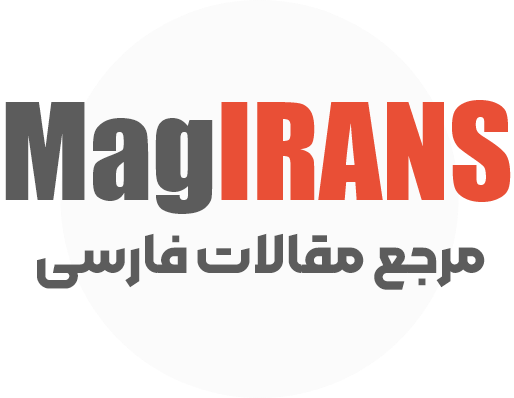بخشی از پاورپوینت
اسلاید 1 :
ریخته گري (1)
فصل نهم
فرآیندهای ذوب
اسلاید 3 :
ریخته گري(آلومینیم)
شمش ریزی
شكل ریزی
شمش ريختگي
اسلاید 4 :
The Big Picture
c13f01
اسلاید 5 :
Ferrous Materials Steels
Steels are iron-carbon alloys that may contain other alloying elements.
There are 1000s of alloys with different compositions and/or heat treatments.
Low Alloy (<10 wt%)
Low Carbon (<0.25 wt%)
Medium Carbon (0.25 to 0.60 wt%)
High Carbon (0.60 to 1.4 wt%)
High Alloy
Stainless Steel (> 11 wt% Cr)
Tool Steel
اسلاید 6 :
Low Carbon Steel
Plain carbon steels have very little additives (alloying elements) and small amounts of manganese.
Most prevalent type of steel is low carbon steel (greatest quantity produced; least expensive).
Low carbon not responsive to heat treatment; have to cold work.
Weldable and machinable.
High Strength, Low Alloy (HSLA) steel contains alloying elements (copper, vanadium, nickel and molybdenum) up to 10 wt %; they have higher strengths (than plain LC steels) and may be heat treated.
ريخته گري (1)- دانشكده مهندسي مواد و متالورژي - دانشگاه علم و صنعت ایران 1384
اسلاید 7 :
Effects of Alloying Elements on Steel
Manganese contributes to strength and hardness; dependent upon the carbon content. Increasing the manganese content decreases ductility and weldability. Manganese has a significant effect on the hardenability of steel.
Phosphorus increases strength and hardness and decreases ductility and notch impact toughness of steel. The adverse effects on ductility and toughness are greater in quenched and tempered higher-carbon steels.
Sulfur decreases ductility and notch impact toughness especially in the transverse direction. Weldability decreases with increasing sulfur content. Sulfur is found primarily in the form of sulfide inclusions.
Silicon is one of the principal deoxidizers used in steelmaking. Silicon is less effective than manganese in increasing as-rolled strength and hardness. In low-carbon steels, silicon is generally detrimental to surface quality.
Copper in significant amounts is detrimental to hot-working steels. Copper can be detrimental to surface quality. Copper is beneficial to atmospheric corrosion resistance when present in amounts exceeding 0.20%.
Nickel is a ferrite strengthener. Nickel does not form carbides in steel. It remains in solution in ferrite, strengthening and toughening the ferrite phase. Nickel increases the hardenability and impact strength of steels.
Molybdenum increases the hardenability of steel. It enhances the creep strength of low-alloy steels at elevated temperatures.
اسلاید 9 :
Effect of Carbon content on Steel Hardness
اسلاید 10 :
Classification of Metal Alloys
Metal
Alloys
Steels
Ferrous
Nonferrous
Cast Irons
<1.4wt%C
3-4.5
wt%C
اسلاید 12 :
Iron accounts for more than 95 wt% of the alloy material, while the main alloying elements are carbon (between 2.1- 4.5 wt%) and silicon (normally 1-3 wt%).
From the iron-iron carbide phase diagram, cast iron has a eutectic point at 1153 °C and 4.2 wt% carbon.
Since cast iron has roughly this composition, its melting temperature of 1150 to 1200 °C is about 300 °C lower than the melting point of pure iron.
The most common cast iron types are: grey, white, nodular, malleable and compacted graphite.
Ferrous Materials Cast Irons
اسلاید 13 :
Challenges of Molten Metal
Hot metal readily forms oxides (dross or slag)
Can be carried into the mold
Can be controlled by pouring methods
Control of temperature and atmosphere can slow creation of slag
1- پيشگيري
1-1- كنترل مواد شارژ
1-2- كنترل فرآيند ذوب
1-2-1- كوره ها
1-2-2- ساير تجهيزلت
1-2-3- كنترل روش
2- درمان
2-1- گاز زدايي
2-2- آخال زدايي
اسلاید 14 :
Challenges of Molten Metal
Dissolved gases
Porosity
Can be controlled by:
Vacuum degassing
Gas flushing
“Killing” - Reacting trapped gas with material that will form buoyant compound that will float to surface
Oxygen removed from copper by adding phosphorous
Oxygen removed from steel by adding aluminum or silicon
اسلاید 15 :
Challenges of Molten Metal
Temperature Control
Temp too Low
Misruns
Cold shuts
Temp too High
Excessive mold wear
Higher reactivity of molten metal
Penetration defects (excessive flash or entrapped sand)
اسلاید 16 :
Three Cast Structures of Solidified Metals
FIGURE 5.8 Schematic illustration of three cast structures of metals solidified in a square mold:
(a) pure metals;
(b) solid-solution alloys; and
(c) the structure obtained by heterogeneous nucleation of grains, using nucleating agents.
اسلاید 17 :
Furnaces for Casting Processes
Furnaces most commonly used in foundries:
Cupolas
Direct fuel‑fired furnaces
Crucible furnaces
Electric‑arc furnaces
Induction furnaces
اسلاید 18 :
Cupolas
Vertical cylindrical furnace equipped with tapping spout near base
Used only for cast irons
Although other furnaces are also used, the largest tonnage of cast iron is melted in cupolas
The "charge," consisting of iron, coke, flux, and possible alloying elements, is loaded through a charging door located less than halfway up height of cupola
اسلاید 19 :
Cupola furnace
اسلاید 20 :
Direct Fuel‑Fired Furnaces
Small open‑hearth in which charge is heated by natural gas fuel burners located on side of furnace
Furnace roof assists heating action by reflecting flame down against charge
At bottom of hearth is a tap hole to release molten metal
Generally used for nonferrous metals such as copper‑base alloys and aluminum

